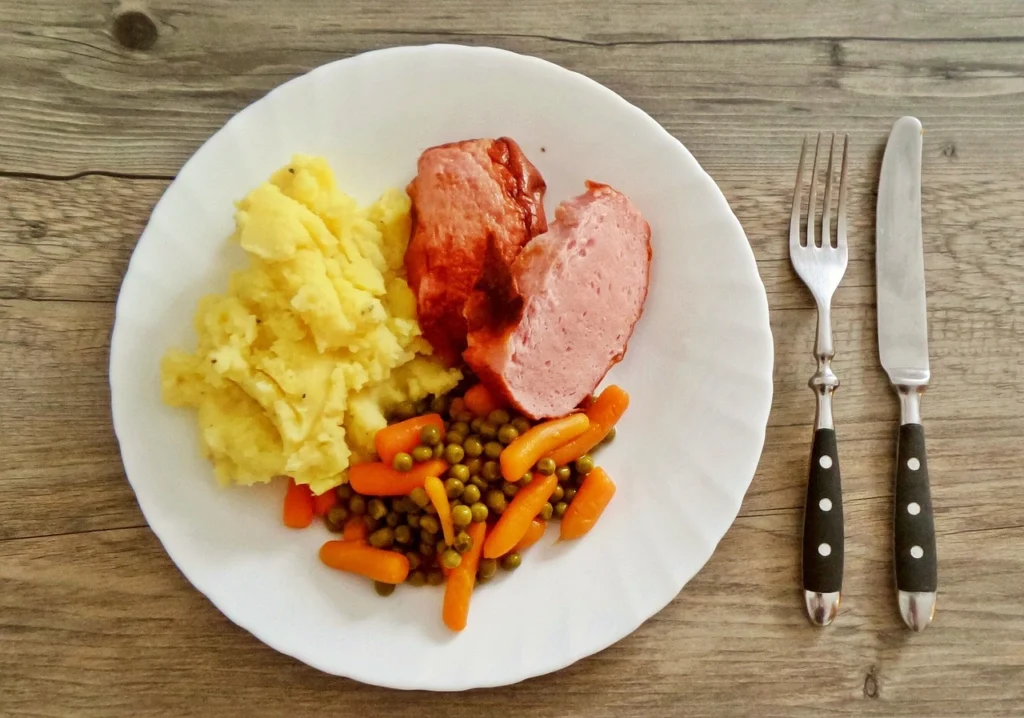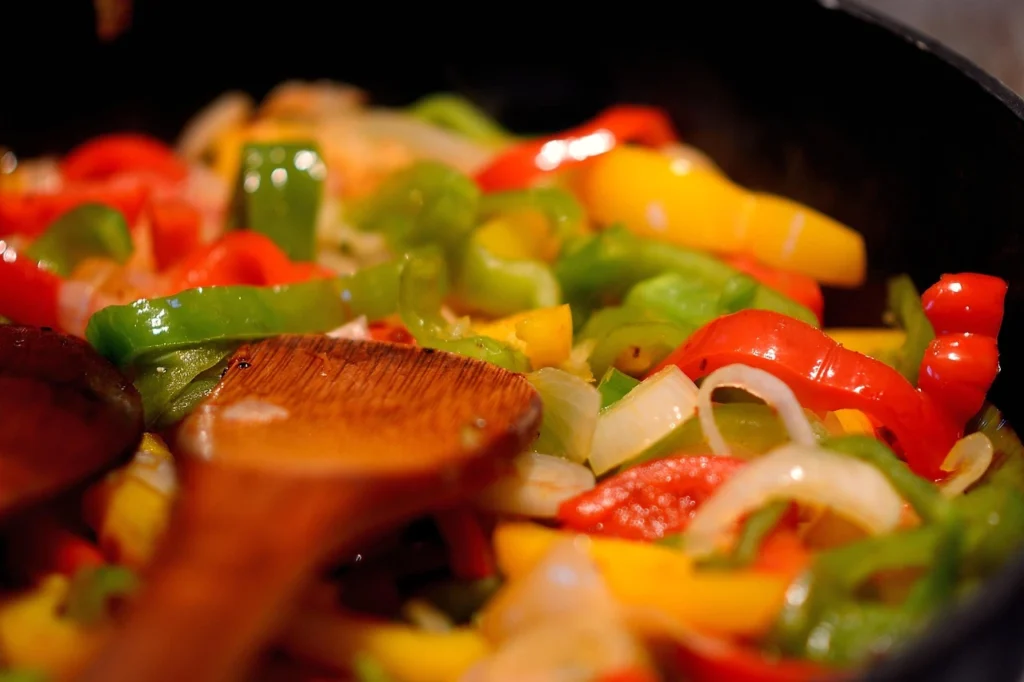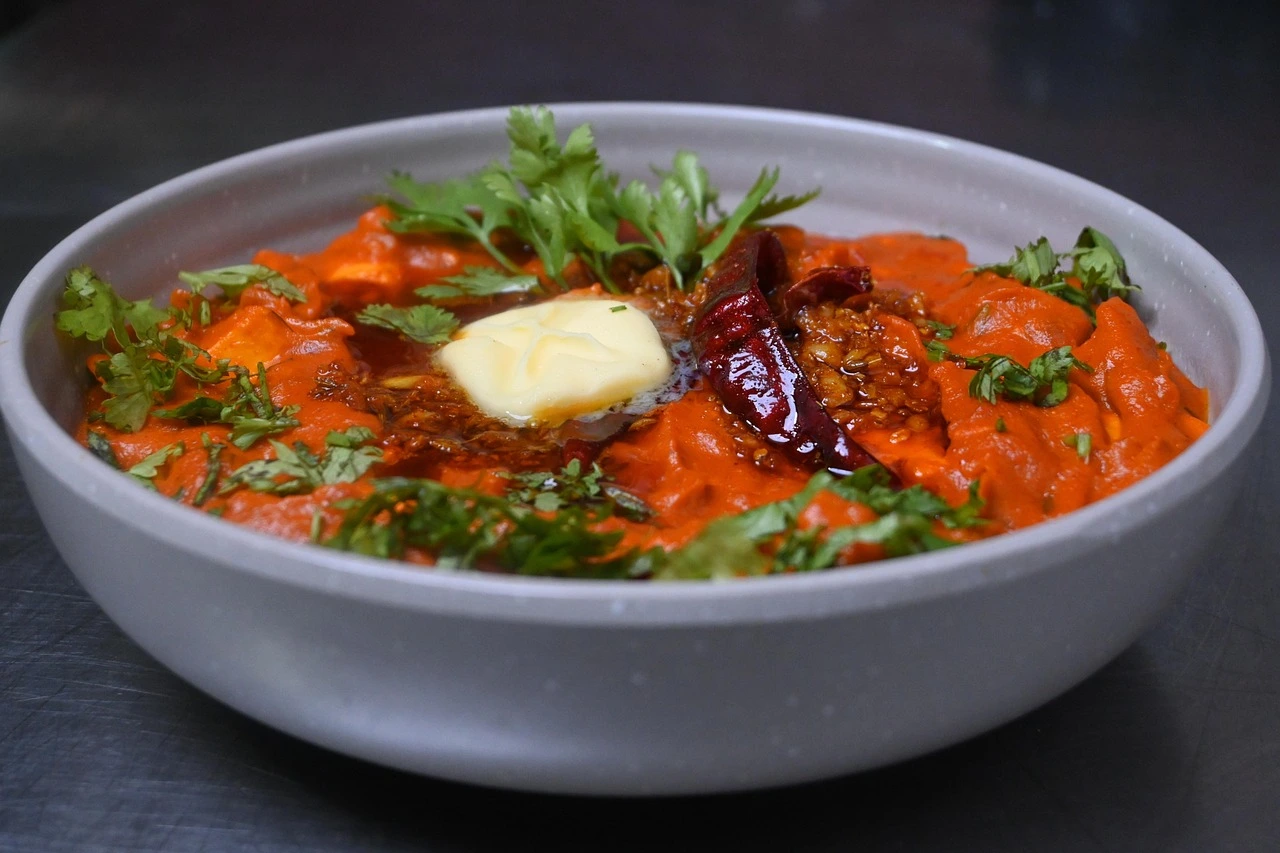What Is Phat Si-Io?
Phat Si-Io, also known as Pad See Ew, is a popular Thai street food dish that features stir-fried wide rice noodles. The name “Phat Si-Io” directly translates to “stir-fried soy sauce,” which reflects the dish’s primary seasoning – a mix of dark soy sauce, light soy sauce, and sometimes sweet soy sauce. The noodles are typically paired with Chinese broccoli (gai lan), eggs, and a choice of protein, such as pork, chicken, beef, or tofu. The dish is known for its delicious combination of savory, slightly sweet, and smoky flavors, achieved by stir-frying over high heat in a wok.
Originating from the influence of Chinese cuisine on Thai food culture, Phat Si-Io has become a staple in Thai households and street vendors’ menus across Thailand. It’s often enjoyed as a quick, satisfying meal that offers both comfort and flavor in each bite. The characteristic “wok hei” or charred aroma, which comes from stir-frying at high heat, adds an extra depth of flavor that makes this dish stand out. Phat Si-Io can be easily customized, whether you prefer it with more vegetables, tofu, or meat, making it a versatile and beloved dish in Thai cuisine.

Key Ingredients
The key ingredients in Phat Si-Io (Pad See Ew) come together to create a balanced and flavorful stir-fry. The following ingredients are essential for achieving the dish’s authentic taste:
- Wide Rice Noodles: The foundation of this dish, wide rice noodles (kuaitiao sen yai), are essential for the perfect texture. They soak up the sauces while maintaining a chewy bite, which is a hallmark of Phat Si-Io.
- Chinese Broccoli (Gai Lan): This leafy green adds both crunch and a slightly bitter taste that complements the savory flavors of the dish. It’s a vital ingredient for authenticity and color.
- Soy Sauce: A mix of dark soy sauce (si-io dam) and light soy sauce (si-io khao) is used to bring deep umami and a rich color to the dish. Dark soy sauce gives the noodles their signature darker hue, while light soy sauce adds saltiness.
- Protein: Options like pork, chicken, beef, shrimp, or tofu are commonly used. Tofu is a popular choice for vegetarians, while meat options are preferred for those looking for more protein.
- Egg: A beaten egg is often scrambled into the dish, adding richness and texture.
- Garlic and Pepper: For extra flavor, garlic is stir-fried with a bit of pepper, enhancing the overall aroma and taste.
Cultural Significance
Phat Si-Io (Pad See Ew) holds a special place in Thai cuisine, reflecting the deep influence of Chinese immigrants on Thai food culture. This dish, with its combination of stir-fried rice noodles and savory soy sauce, is a perfect example of the fusion of Chinese and Thai culinary traditions. The use of wide rice noodles and gai lan (Chinese broccoli) echoes the traditional Chinese stir-fry techniques, while the incorporation of Thai flavors like soy sauce and garlic adds a distinct local touch.
Originally a street food dish, Phat Si-Io is beloved across Thailand and is often enjoyed as a quick and satisfying meal by people from all walks of life. Its popularity continues to grow, both locally and internationally, as Thai street food culture expands globally. Whether served at street vendors or in high-end restaurants, it represents the heart of Thai comfort food, accessible, versatile, and full of flavor.
Essential Cooking Tools
To make a delicious batch of Phat Si-Io, a few key tools are essential for achieving the perfect stir-fry:
- Wok or Large Frying Pan: A wok is ideal because its shape allows heat to distribute evenly and facilitates tossing the ingredients. If you don’t have a wok, a large frying pan with high sides can also work.
- Spatula or Stir-fry Ladle: A wide, flat spatula is perfect for flipping and stirring the noodles, ensuring they cook evenly. A stir-fry ladle with a long handle is useful for maneuvering the ingredients around the pan.
- Chopping Knife: For chopping vegetables like Chinese broccoli and protein, a sharp knife is necessary to get even, bite-sized pieces.
- Cutting Board: A stable cutting board is essential for safely preparing the vegetables and protein before cooking.
- Measuring Spoons: For accurately measuring soy sauces and other seasonings, measuring spoons will help you maintain the right balance of flavors.
Step-by-Step Recipe for Phat Si-Io (Pad See Ew)
Making Phat Si-Io at home is straightforward and incredibly rewarding. Follow these steps to prepare this delicious Thai stir-fry dish.
Ingredients:
- 8 oz (225 g) wide rice noodles
- 2 tbsp dark soy sauce (si-io dam)
- 1 tbsp light soy sauce (si-io khao)
- 1 tbsp oyster sauce (optional for extra umami)
- 1 tsp sugar
- 2 tbsp vegetable oil
- 2 cloves garlic, minced
- 1 egg
- 1 cup Chinese broccoli (gai lan), chopped
- 1/2 cup protein of your choice (chicken, pork, shrimp, or tofu)
- 1 tbsp water or chicken broth (if needed)
- Freshly ground black pepper (to taste)
Instructions:
- Prepare the Ingredients
Start by soaking the rice noodles in warm water for about 30 minutes (or follow package instructions if pre-cooked). Drain and set aside. While the noodles soak, chop your protein (chicken, pork, tofu, or shrimp) into bite-sized pieces and set aside. Rinse and chop the Chinese broccoli into 2-inch pieces. - Cook the Protein
Heat a wok or large frying pan over medium-high heat. Add a tablespoon of vegetable oil. Once hot, add the chopped protein. Stir-fry for 3-5 minutes or until cooked through. If you’re using tofu, cook until golden and crispy on the edges. Remove the cooked protein from the wok and set aside. - Stir-fry the Garlic
In the same wok, add a little more oil if necessary. Add the minced garlic and sauté for about 30 seconds or until fragrant. Be careful not to burn the garlic. - Add the Chinese Broccoli
Add the chopped Chinese broccoli to the wok. Stir-fry for about 1-2 minutes until the broccoli is tender but still slightly crisp. If it looks dry, add a tablespoon of water or chicken broth to create some steam. - Scramble the Egg
Push the vegetables to one side of the wok. Crack an egg into the empty space and scramble it gently. Once the egg is cooked, mix it into the vegetables. - Add the Noodles
Add the soaked and drained wide rice noodles to the wok. Toss them to combine with the garlic, egg, and vegetables. Let the noodles heat through for about 2-3 minutes, stirring occasionally to prevent sticking. - Season the Noodles
Add the dark soy sauce, light soy sauce, oyster sauce (optional), and sugar to the noodles. Stir well to ensure the noodles are evenly coated with the sauce. Allow them to cook for another 2 minutes, ensuring the noodles are heated through and the sauce has absorbed. - Add the Protein Back
Return the cooked protein to the wok and toss everything together. Stir-fry for another minute to combine the flavors. - Final Touches
Taste the dish and adjust the seasoning with freshly ground black pepper. If you prefer more saltiness, add a splash of soy sauce. Serve immediately, garnished with extra fresh herbs or chili if desired.
Tips for Authentic Flavor
To achieve the most authentic Phat Si-Io (Pad See Ew), it’s important to follow a few key tips that enhance the dish’s depth of flavor:
- Use High Heat: Stir-fry the ingredients over high heat to create that signature wok hei—the smoky charred aroma that adds an irresistible flavor to the noodles. A hot wok helps achieve the perfect texture without overcooking the ingredients.
- Soy Sauce Balance: The key to flavor balance in Phat Si-Io is in the soy sauce. Use dark soy sauce for richness and color, and light soy sauce for saltiness. Adjust the proportions based on your taste preferences.
- Fresh Ingredients: Always use fresh Chinese broccoli (gai lan) and wide rice noodles. The freshness of the vegetables and noodles enhances the overall taste and texture of the dish.
- Don’t Skip the Sugar: A small amount of sugar balances the savory flavors and enhances the depth of the soy sauce, giving your dish that perfect sweet-savory balance.

Vegetarian and Vegan Options
For those following a vegetarian or vegan diet, Phat Si-Io (Pad See Ew) can be easily adapted without sacrificing flavor. Here are a few substitutions to make this dish plant-based:
- Protein Substitution: Replace the meat or shrimp with tofu. Firm tofu works best as it absorbs the flavors of the soy sauce and becomes crispy when stir-fried. You can also try tempeh or seitan for a more textured protein alternative.
- Vegetables: While Chinese broccoli (gai lan) is the traditional vegetable, you can increase the variety by adding other vegetables like bell peppers, carrots, or mushrooms. These add extra texture and flavor while maintaining the dish’s heartiness.
- Soy Sauce: Ensure that the soy sauce you use is vegan-friendly. Some soy sauces may contain fish sauce, so look for alternatives that are clearly labeled as vegetarian or vegan. Tamari is a good gluten-free and vegan option.
- Oyster Sauce: Replace oyster sauce with a vegan oyster sauce made from mushrooms, which provides a similar umami flavor.
By making these simple swaps, you can enjoy an authentic-tasting Phat Si-Io that’s fully plant-based while still bursting with the familiar savory flavors of this beloved Thai dish.
Regional Variations
Phat Si-Io (Pad See Ew) is a versatile dish that varies across different regions of Thailand, offering slight tweaks in ingredients and preparation styles. Here are a few regional variations:
- Bangkok Style: In the bustling streets of Bangkok, Phat Si-Io is typically served with pork or chicken, with the addition of oyster sauce for a deeper umami flavor. Street vendors in the capital often use a wok to achieve that coveted wok hei (charred aroma), a signature feature of the dish.
- Northern Thailand: In the northern regions, Phat Si-Io might feature a lighter use of soy sauces and incorporate local vegetables like cabbage or long beans. The dish is also sometimes made with spicy chili paste to give it a more pungent, bold flavor.
- Southern Thailand: The southern version often includes seafood, such as shrimp or fish, due to the region’s proximity to the coast. The dish may also incorporate tamarind or coconut milk to add a sweet, tangy twist to the savory base.
Each region brings its own flair to this beloved Thai stir-fry, whether through the choice of protein, seasoning, or vegetable additions, making Phat Si-Io a delightful and adaptable dish enjoyed across the country.
Pairing Suggestions
To enhance your Phat Si-Io (Pad See Ew) experience, consider pairing it with complementary dishes and beverages:
- Side Dishes:
- Thai Papaya Salad (Som Tum): The refreshing, tangy crunch of papaya salad offers a great contrast to the rich, savory flavors of Phat Si-Io.
- Thai Spring Rolls: Crispy spring rolls filled with vegetables or shrimp make for a delightful appetizer before your stir-fried noodles.
- Steamed Jasmine Rice: If you want to go for a lighter, more traditional meal, pair your noodles with a simple bowl of steamed jasmine rice to balance the richness.
- Beverages:
- Thai Iced Tea: The creamy, sweet flavor of Thai iced tea is a perfect balance to the salty, savory noodles.
- Lemonade or Limeade: For a refreshing, citrusy option, serve your Phat Si-Io with freshly squeezed lemonade or limeade to cut through the richness.
Common Queries About Phat Si-Io
- What is the difference between Phat Si-Io and Pad Thai?
While both dishes are popular Thai stir-fries, Phat Si-Io (Pad See Ew) uses wide rice noodles and is cooked with soy sauce, resulting in a savory and slightly smoky flavor. In contrast, Pad Thai is made with thinner rice noodles and typically features a sweeter, tangier flavor due to tamarind, fish sauce, and sugar. Additionally, Pad Thai often includes crushed peanuts and a lime wedge as garnishes. - Can I make Phat Si-Io gluten-free?
Yes! To make Phat Si-Io gluten-free, use tamari or another gluten-free soy sauce in place of regular soy sauce. Be sure that the other sauces you use, such as oyster sauce, are gluten-free as well. - Can I substitute Chinese broccoli (gai lan)?
If you can’t find Chinese broccoli, you can substitute it with other greens like broccoli rabe, spinach, or bok choy. These alternatives won’t replicate the exact flavor of gai lan but will still provide the necessary texture and color. - What protein can I use for Phat Si-Io?
Phat Si-Io can be made with a variety of proteins. Popular choices include chicken, pork, beef, shrimp, or tofu. For a vegetarian version, tofu or tempeh works well as a protein substitute. - How can I make Phat Si-Io spicier?
To add spice, you can include Thai bird’s eye chilies or a dash of chili paste while stir-frying the ingredients. Adjust the level of spice to your preference.
Conclusion
Phat Si-Io (Pad See Ew) is a beloved Thai dish that offers a perfect balance of savory, slightly sweet, and smoky flavors. Whether you’re making it with chicken, pork, shrimp, or tofu, this stir-fried noodle dish is both satisfying and adaptable to various tastes and dietary preferences. With its origins in Thai street food culture, Phat Si-Io continues to be a favorite, celebrated for its simplicity, vibrant flavors, and versatility.
By following the step-by-step instructions and tips for achieving that authentic wok hei flavor, you can bring this delicious dish to life in your own kitchen. Whether you’re cooking for yourself or sharing with friends and family, Phat Si-Io will surely impress with its rich textures and bold flavors. Don’t be afraid to experiment with regional variations or add your own personal touch to make this dish your own!

